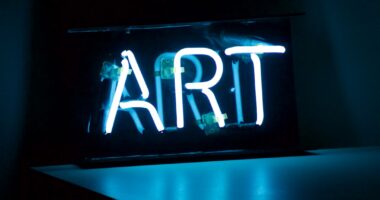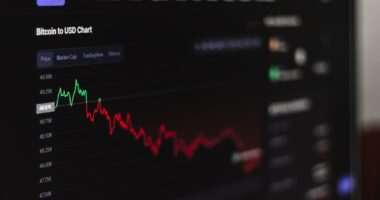Non-fungible tokens (NFTs) have taken the digital world by storm, but what exactly are they and how do they work? NFTs are unique digital assets that represent ownership or proof of authenticity of a specific item or piece of content, such as artwork, videos, music, or even tweets. Unlike cryptocurrencies like Bitcoin or Ethereum, which are fungible and can be exchanged on a one-to-one basis, NFTs are non-fungible, meaning each one is unique and cannot be exchanged on a like-for-like basis.
NFTs are built using blockchain technology, which is a decentralized and distributed digital ledger that records transactions across multiple computers. This technology ensures the security and authenticity of NFTs, as each token is stored on the blockchain and cannot be replicated or tampered with. When someone purchases an NFT, they are essentially buying a digital certificate of ownership that is stored on the blockchain, providing them with proof of authenticity and ownership of the digital asset. This has opened up a whole new world of possibilities for creators and collectors, as it allows for the buying, selling, and trading of digital assets in a secure and transparent manner.
In summary, NFTs are unique digital assets that represent ownership or proof of authenticity of a specific item or piece of content, and they are built using blockchain technology to ensure security and authenticity. This has revolutionized the way digital content is bought, sold, and traded, opening up new opportunities for creators and collectors in the digital space.
The Process of Minting Your Own NFTs
Minting your own NFTs can be an exciting and potentially lucrative endeavor, but it’s important to understand the process before diving in. The first step in minting an NFT is to choose a platform to mint it on. There are several popular NFT marketplaces such as OpenSea, Rarible, and Foundation, each with its own unique features and community. Once you’ve chosen a platform, you’ll need to connect a digital wallet that supports the blockchain network the platform uses, such as MetaMask for Ethereum-based NFTs.
After connecting your wallet, you can then upload the digital content you want to tokenize as an NFT. This could be artwork, music, videos, or any other digital asset you want to sell as an NFT. You’ll also need to provide details such as the name, description, and any additional files or links related to the NFT. Once you’ve completed these steps, you can set the price and other parameters for your NFT, such as royalties for future sales. Finally, you’ll pay a gas fee to complete the minting process, which can vary depending on network congestion and other factors.
In conclusion, minting your own NFTs involves choosing a platform, connecting a digital wallet, uploading your digital content, providing details and setting parameters for your NFT, and paying a gas fee to complete the minting process. It’s important to carefully consider each step and do thorough research to ensure a successful minting experience.
NFT Artists: How to Get Started and Find Success in the NFT Market
For artists looking to break into the NFT market, there are several key steps to take in order to find success in this rapidly growing industry. The first step is to create high-quality digital artwork that will resonate with potential buyers in the NFT marketplace. This could be anything from digital paintings and illustrations to 3D sculptures and animations. It’s important to create unique and original work that stands out in a crowded market.
Once you have your artwork ready, the next step is to choose the right platform to mint and sell your NFTs. Each platform has its own community and features, so it’s important to do your research and find the one that best aligns with your goals as an artist. Building a strong online presence through social media and other channels can also help you connect with potential buyers and collectors. Engaging with the NFT community and participating in events such as virtual art shows and auctions can also help you gain visibility and build a following for your work.
In summary, getting started as an NFT artist involves creating high-quality digital artwork, choosing the right platform to mint and sell your NFTs, building a strong online presence, and engaging with the NFT community. By taking these steps and staying dedicated to your craft, you can find success as an NFT artist in this exciting new market.
NFT Jobs: Exploring Career Opportunities in the NFT Industry
| Job Title | Skills Required | Average Salary |
|---|---|---|
| NFT Developer | Blockchain development, smart contracts, NFT standards | 80,000 – 150,000 |
| NFT Marketing Specialist | Digital marketing, NFT promotion, community management | 60,000 – 100,000 |
| NFT Artist | Digital art creation, NFT platforms, copyright knowledge | 40,000 – 80,000 |
| NFT Project Manager | Project management, NFT industry knowledge, team leadership | 70,000 – 120,000 |
The rise of NFTs has created a wide range of career opportunities in the industry beyond just creating and selling digital artwork. One potential career path is becoming an NFT consultant or advisor, helping artists and creators navigate the complex world of NFTs and blockchain technology. This could involve providing guidance on minting NFTs, understanding smart contracts, or navigating legal and ethical considerations in the industry.
Another potential career opportunity is working for an NFT marketplace or platform in roles such as community management, marketing, or business development. These roles involve engaging with artists and collectors, promoting the platform’s features and events, and building partnerships within the industry. Additionally, there are opportunities in blockchain development and technology roles related to NFTs, such as smart contract development or blockchain engineering.
In conclusion, there are numerous career opportunities in the NFT industry beyond creating and selling digital artwork. These include roles such as NFT consultant or advisor, working for an NFT marketplace or platform in various capacities, and blockchain development and technology roles. As the industry continues to grow, so too will the demand for skilled professionals in these areas.
NFT News: Staying Up-to-Date with the Latest Developments and Trends in the NFT World
Staying informed about the latest developments and trends in the NFT world is crucial for anyone involved in the industry. One way to stay up-to-date is by following industry news websites and blogs that cover topics such as new platform launches, celebrity NFT releases, market trends, and regulatory developments. These sources can provide valuable insights into the ever-evolving landscape of NFTs.
Another way to stay informed is by joining online communities and forums dedicated to NFTs. Platforms like Discord and Clubhouse host discussions on various topics related to NFTs, including artist spotlights, collector insights, and industry news. Engaging with these communities can provide valuable networking opportunities and help you stay ahead of the curve in this fast-paced industry.
In summary, staying up-to-date with the latest developments and trends in the NFT world is essential for anyone involved in the industry. This can be achieved by following industry news websites and blogs, joining online communities and forums dedicated to NFTs, and engaging with others in the industry to stay informed about new opportunities and trends.
Navigating the Legal and Ethical Considerations of Minting NFTs

As with any emerging industry, navigating the legal and ethical considerations of minting NFTs is crucial for both creators and collectors. One key consideration is copyright law, as minting an NFT of someone else’s work without permission could lead to legal issues. It’s important for creators to ensure they have the rights to mint their work as an NFT or obtain permission from the original copyright holder.
Another consideration is environmental impact, as minting NFTs on certain blockchain networks can have a significant carbon footprint. This has led to discussions around eco-friendly alternatives for minting NFTs, such as using blockchain networks with lower energy consumption or exploring other technologies like proof of stake.
In conclusion, navigating the legal and ethical considerations of minting NFTs involves understanding copyright law and obtaining permission for your work, as well as considering the environmental impact of minting on certain blockchain networks. By staying informed about these considerations and making responsible choices as creators and collectors, we can help ensure a sustainable future for the NFT industry.
Marketing and Selling Your Minted NFTs: Tips for Success in the NFT Marketplace
Once you’ve minted your NFTs, effectively marketing and selling them is crucial for finding success in the marketplace. One key strategy is leveraging social media platforms to showcase your work and connect with potential buyers. Platforms like Twitter, Instagram, and TikTok can be powerful tools for reaching a wider audience and building a following for your art.
Engaging with the NFT community through virtual art shows, auctions, and collaborations can also help you gain visibility for your work. Participating in events hosted by NFT marketplaces or joining artist collectives can provide valuable networking opportunities and help you connect with potential buyers.
In summary, effectively marketing and selling your minted NFTs involves leveraging social media platforms to showcase your work, engaging with the NFT community through virtual events and collaborations, and building a strong online presence to connect with potential buyers. By implementing these strategies and staying dedicated to promoting your work, you can increase your chances of finding success in the competitive NFT marketplace.
If you’re interested in learning more about how to mint an NFT, you should check out this article on NFT-Jobs. This website offers valuable resources and information for those looking to enter the world of NFTs and blockchain technology. Whether you’re an artist, collector, or investor, understanding the process of minting an NFT is crucial for success in this rapidly growing industry.
FAQs
What is minting an NFT?
Minting an NFT refers to the process of creating a unique digital asset on a blockchain, which can represent various forms of digital content such as art, music, videos, and more.
How do you mint an NFT?
To mint an NFT, you typically need to use a specialized platform or marketplace that supports NFT creation. This involves uploading your digital content, adding relevant metadata, and paying a fee to complete the minting process.
What is the cost of minting an NFT?
The cost of minting an NFT can vary depending on the platform or marketplace you use. Some platforms may charge a flat fee, while others may take a percentage of the final sale price as a commission.
What blockchain can be used to mint NFTs?
NFTs can be minted on various blockchains, but the most popular and widely used for NFT minting is the Ethereum blockchain. Other blockchains such as Binance Smart Chain, Flow, and Tezos also support NFT minting.
What are the steps to mint an NFT on Ethereum?
To mint an NFT on Ethereum, you would typically need to connect your digital wallet to an NFT marketplace or platform, upload your digital content, add metadata such as title, description, and royalties, and then pay the gas fee to complete the minting process.





